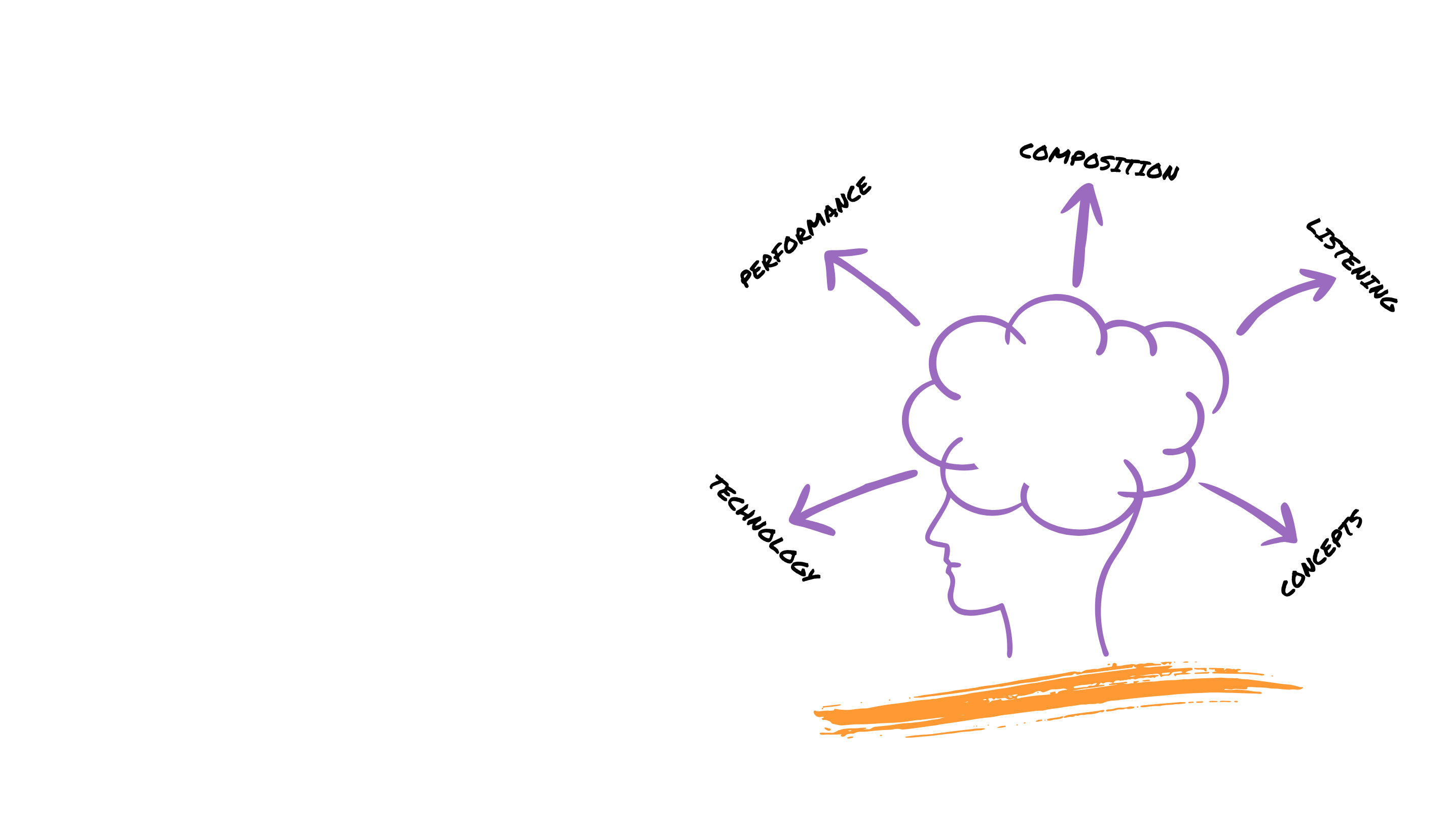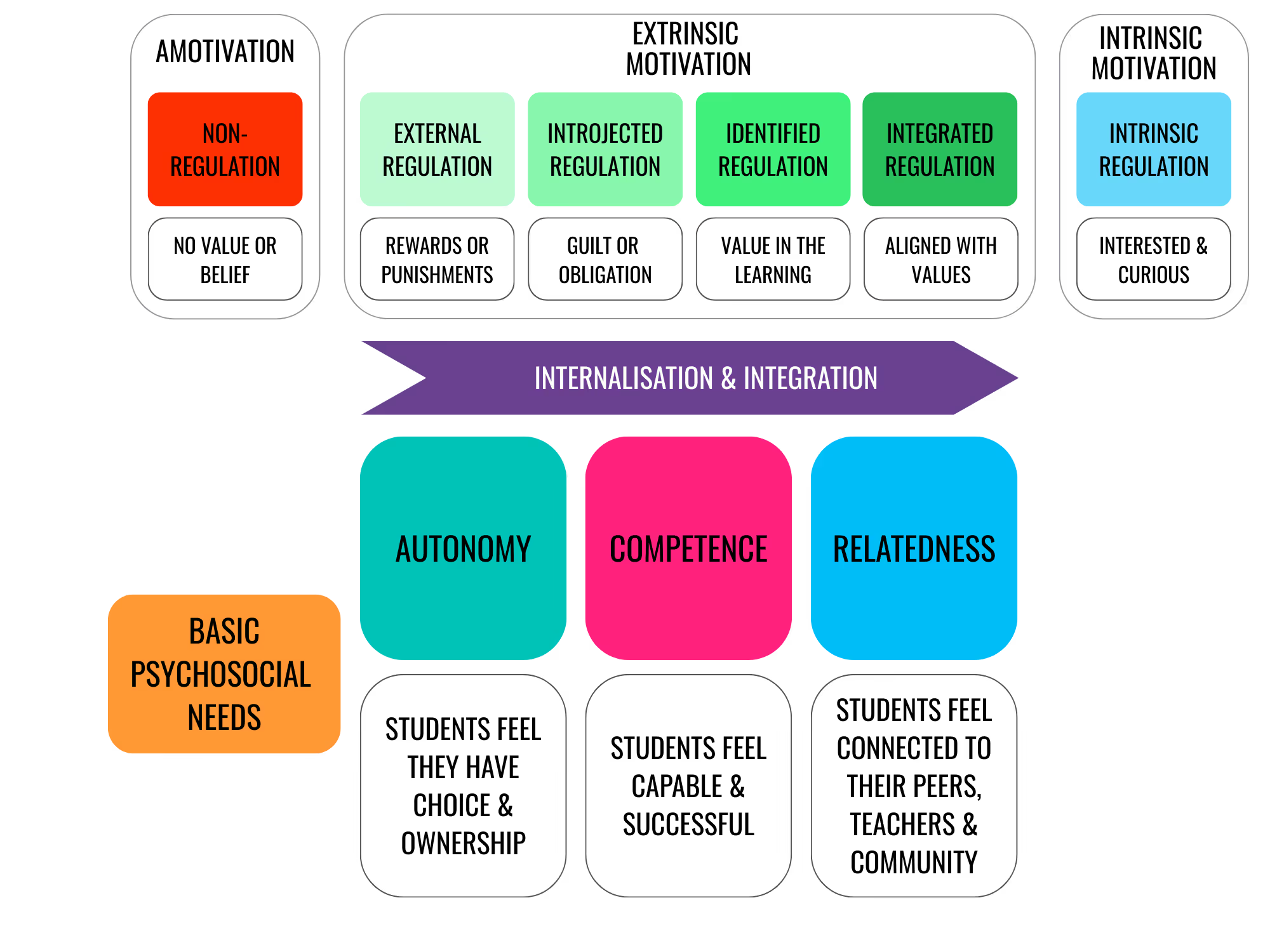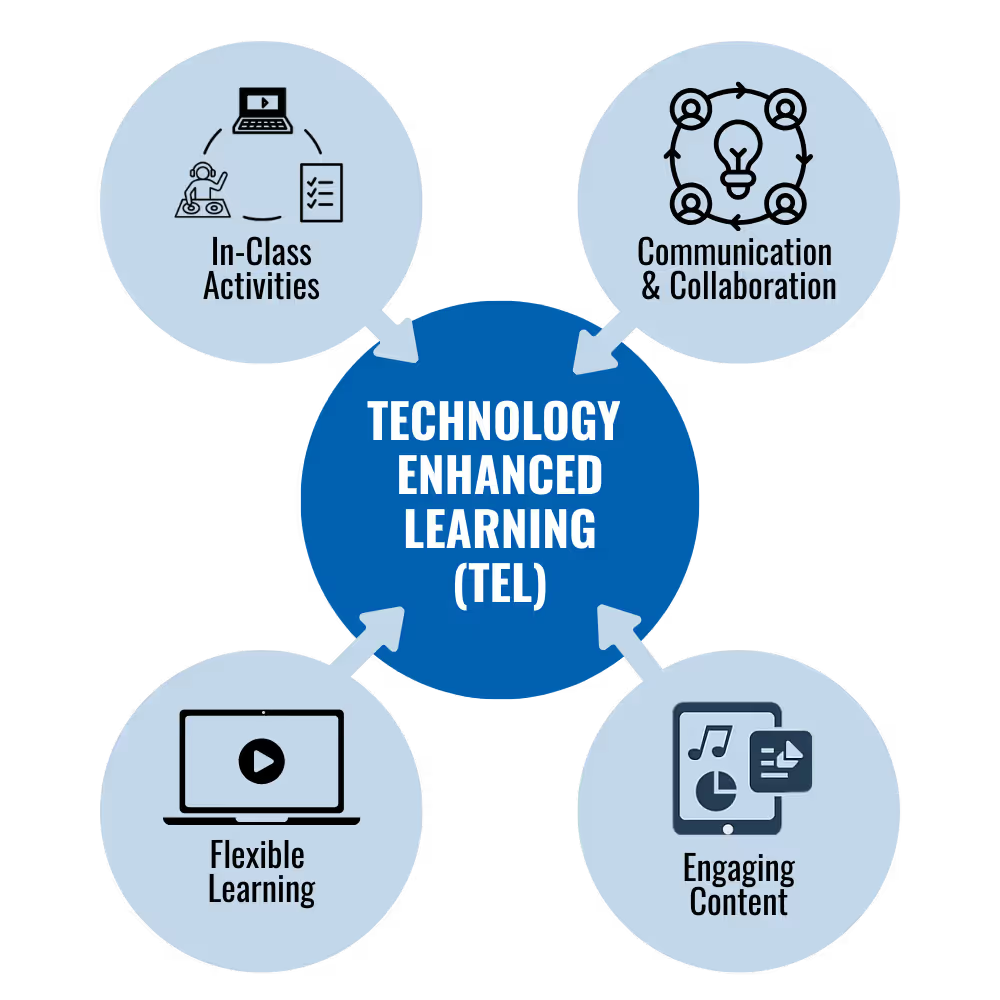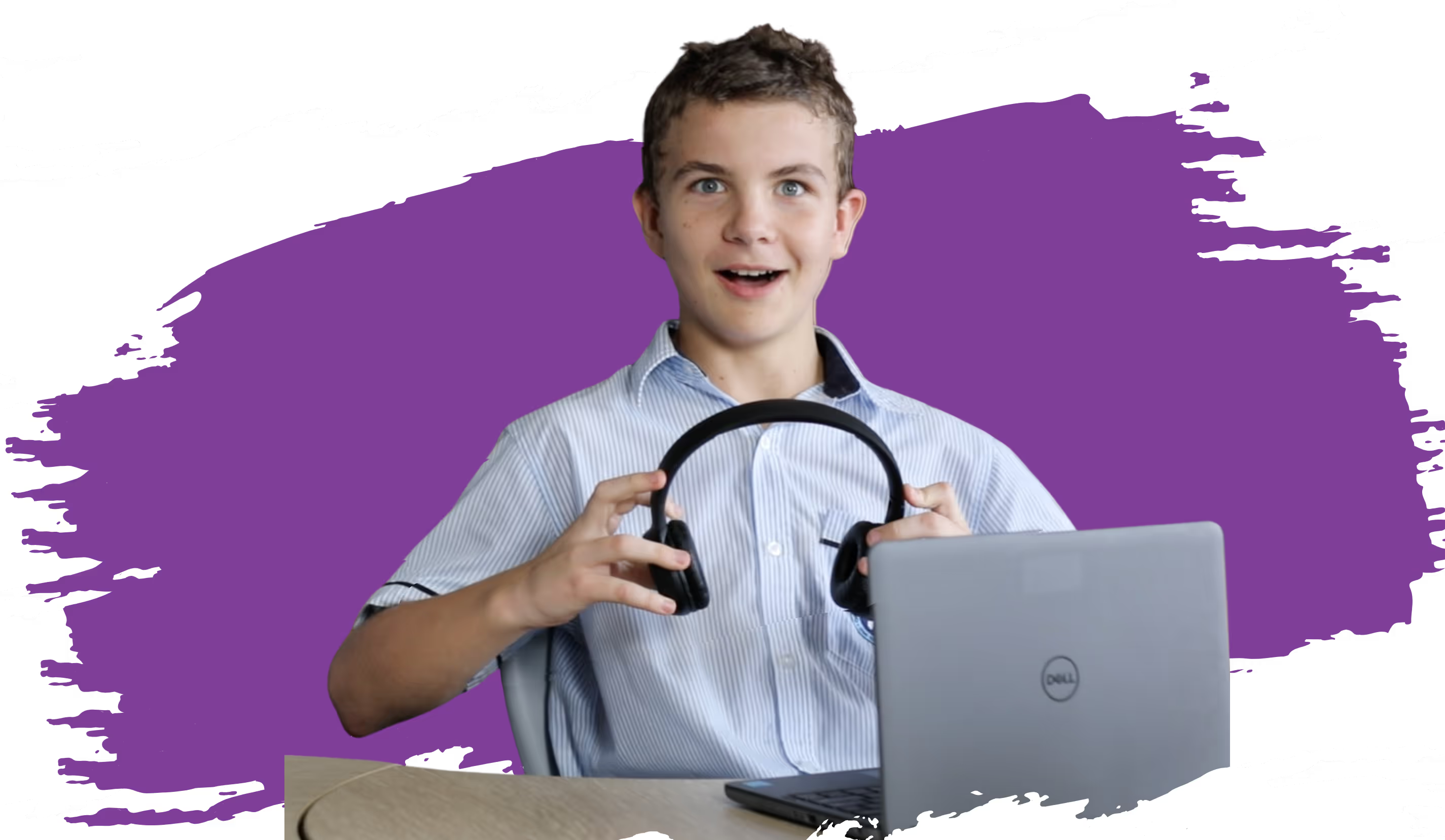
Drawing on a powerful learner-centered model of motivation, we view engagement through two essential lenses: autonomy and investment.
Autonomy speaks to the level of choice and ownership students feel in their learning — from selecting projects to shaping how they present their work.
Engagement is about the depth of focus and energy they bring when the learning feels meaningful and relevant.
Together, these factors create classrooms where students are not only compliant, but genuinely curious, creative, and connected to the process of making music. This is where lasting motivation and confidence take root.
This is our goal—students feel ownership, are deeply curious, and persist through challenges (high autonomy, high engagement).
Students may show compliance - but there’s no meaningful connection for them (low autonomy, high engagement).
Even with freedom to explore, students may disengage if they don’t connect with the topic or feel incapable of succeeding (high autonomy, low engagement).
This is where motivation collapses - the student is mentally absent and disinterested (low autonomy, low engagement).

Motivation isn’t one-size-fits-all. Some students dive in because they’re curious and love the challenge, while others need encouragement, recognition, or a clear sense of purpose. Self-Determination Theory (SDT) explains this spectrum of motivation and shows how students thrive when three core needs are met: autonomy (choice), competence (confidence in their abilities), and relatedness (connection with others).
When these needs align, curiosity turns into lasting drive, and learning becomes something students want to do — not just something they have to do.
SDT is a research-backed framework developed by psychologists Deci and Ryan. It shows how different types of motivation — from no motivation, to extrinsic (driven by rewards or pressure), to intrinsic (driven by curiosity and enjoyment) — influence learning outcomes. The closer students move toward intrinsic motivation, the more engaged, resilient, and self-driven they become.
- Autonomy: Students feel they have choice and control in their learning.
- Competence: Students see their progress and believe they can succeed.
- Relatedness: Students feel connected to peers, teachers, and the wider learning community.
Meeting these needs is the foundation of long-term curiosity and motivation.
- Amotivation: No value or intent to engage.
- Extrinsic Motivation: Driven by rewards, recognition, comparison, or external goals (from external regulation through to integrated regulation).
- Intrinsic Motivation: Driven by curiosity, enjoyment, and self-expression.
Our aim is to support students as they move from amotivation and external pressures toward intrinsic, self-sustaining motivation.
Engagement drops sharply from primary into middle school — research shows just half of students report feeling engaged in their learning by this stage of their school journey.
By supporting autonomy, competence, and relatedness, we can reverse that decline.
In music, this means more than just playing notes — it means giving students real choices, space to succeed, and opportunities to collaborate with peers on projects that matter to them.

Technology isn’t just an add-on in today’s classroom — it’s a bridge that connects students to new ways of learning.
With the right tools, students can learn at their own pace, access a variety of resources, and stay engaged through interactive, hands-on experiences.
Technology-Enhanced Learning (TEL) levels the playing field by supporting different learning needs, boosting motivation, and preparing students with the digital skills they’ll need beyond school.
Technology-Enhanced Learning isn’t just about laptops and apps — it’s about using whatever tools are available to make learning more interactive and empowering.
That could mean tapping into digital platforms, DAWs, or even existing classroom instruments when they have built-in tech features.
What matters most is giving students opportunities to experiment, collaborate, and create, turning lessons into active experiences where they feel agency and ownership.
TEL gives every student a way in, no matter their starting point. For those with little or no prior music experience, digital tools and interactive tasks create accessible entry points — they can build loops, explore sounds, or remix tracks without needing advanced performance skills.
At the same time, more experienced students can extend themselves with deeper creative challenges. This built-in differentiation means everyone gets the chance to shine, with each learner finding success and recognition on their own terms.
TEL in music is never one-dimensional — it’s the blend of hardware, software, and interactive activities that makes it powerful. Sometimes it’s keyboards or MIDI controllers, other times it’s DAWs or recording apps, and often it’s hands-on tasks that bring theory and musical concepts to life. By weaving in real industry topics and current trends, we keep learning relevant and diverse, giving students multiple pathways to connect with music in ways that feel authentic and exciting.
With TEL, students build both confidence and capability. Interactive tools help new music learners catch up while offering extension opportunities for advanced students, ensuring everyone can succeed in the music classroom, at their own level.
At the same time, students develop transferable digital skills — from problem-solving to collaboration — while staying motivated through tasks that feel purposeful and authentic. TEL narrows gaps, builds engagement, and turns classrooms into creative studios where every learner can shine.
Creating Tomorrow's Musicians, Today.
Capture curiosity and bring autonomy, competence and connection into your music classroom.


